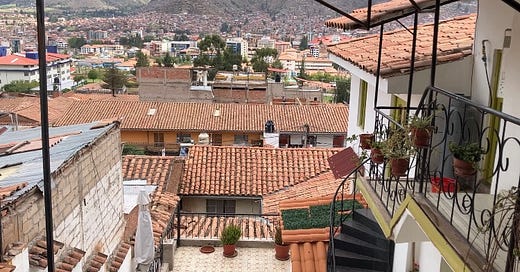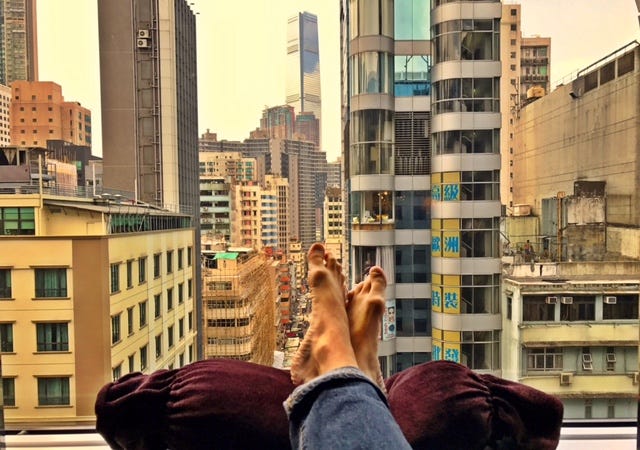Slow living is a concept that I first embraced more than ten years ago after my first solo adventure to Costa Rica. I have written about slow living here over the past four years. It was on that first trip to Costa Rica that I discovered the pura vida way of life or “pure life” as a typical type A person coming for a short escape from the rapid pace and insanity of corporate America.
After 8 peaceful days of living without the distractions of a phone or watch, immersing myself in nature, meditation, yoga and surfing, this pure and simple way of life among some of the world’s longest living people, the lifestyle of slow living became deeply engrained in me and I committed myself to never going back to the old way of life.
I sought to do my best to embody this slower way of life amidst the fast-paced culture of America. I became a yoga teacher and later a meditation teacher, seeking to invite others slow down and embrace this quieter way of being in the world. I bought a small house outside of the main city of Austin and attempted to live simply.
It was that first solo travel experience that really set my future path on a very different trajectory. It would lead me to living for a year in a small house in Kyoto, Japan. It would eventually lead me back to Central America and Costa Rica for two years.
I have now come to embody another similar way of life called slow travel. The term slow travel has been coined yet I very rarely observe it among other travelers I meet on my journey. Slow travel embraces the idea of travel without a time schedule or even a next destination. It is a way of moving through the world without an itinerary or a rush to check off one location and rush on to the next. It is a way of traveling that allows one to fully immerse themselves into each culture and explore a much deeper experience of daily life in that country, living among locals and experiencing life as they do.
On my various journeys over the past four years, I have lived in a tiny house in Kyoto, Japan for a year, immersing myself in the ways and arts of Japanese culture. I have lived on the Guanacaste coast of Costa Rica for 3 months during the rainy season. I have lived on a mountain in Boquete, Panama for 6 months among indigenous people as my neighbors. This followed by another year and a half surrounded by nature on a mountain in Costa Rica.
As I now write, I find myself in Cusco, Peru, the sacred land of the Inca civilization, for the past six weeks.
Whether by chance, choice or divine synchronicity, slow travel is now my way living. I no longer hold any permanent home in the world. I live comfortably out of one bag of clothing and possessions. For almost two years I have earned my way through the world teaching English to executives in Japan. While this would hardly support a lifestyle in the U.S. it generously affords me the opportunity to live reasonably comfortably while exploring much lesser expensive countries in other parts of the world.
Slow travel has allowed me to immerse myself into other cultures and live like the locals and experience these countries through a lens most tourists moving through quickly will never see or experience.
When I arrived in Cusco at the beginning of December my plan was to stay here for only one month and then keep making my way down south, eventually to reach Buenos Aires, Argentina. Now, after six weeks, I have only begun to get a small glimpse of the magic of this sacred place and discover what can be learned from the remaining threads of the Inca culture. I knew shortly after my arrival that something was keeping me here longer, drawing me to explore this place further and to learn what there was for me to learn.
And so, as a slow traveler in the world, who is on the journey not to arrive anywhere at some other destination, I am here to explore and learn from this ancient culture until it becomes clear that it is time for me to move on to the next destination.
Vacilando (verb): to wander or travel with the knowledge that the journey is more important than the destination
Sunday Hike to Lake Humantay
Lake Humantay sits at 13,780 feet and is considered to be one of the most sacred and beautiful sites near Cuscos. We traveled by minivan for two and a half hours, enjoyed a traditional Peruvian breakfast on the way, followed by the 9 mile up an back hike to the lake which sits hight up in the mountains. It is called “Lago Humantay” in Spanish.
View From the Road
Beauty is not in the face,
beauty is a light in the heart.
-Khalil Gibran
Archives
Enjoy four years of past articles from the Zen and Ink Journals journey in the archives.
Enjoy published articles from my travels.
Subscribe. Donate. Share the Journey.
Zen and Ink Journals represents hundreds of hours of writing over the past decade, sometimes from a train in remote China or a coffee shop in Kyoto, a hammock in Costa Rica or a simple cabin on a mountaintop in Boquete, Panama or Ciudad Colón.
On these pages, I share my observations of kindness and beauty from my adventures in the world and invite you to listen quietly for the call within you to explore the places that beckon your soul.
If you would like to become a regular subscriber, please consider foregoing the cost of one cup of coffee and a pastry each month ($8) and becoming a monthly subscriber.
If you would like to stop receiving emails from Zen and Ink Journals simply click the unsubscribe button at the bottom of this email.









